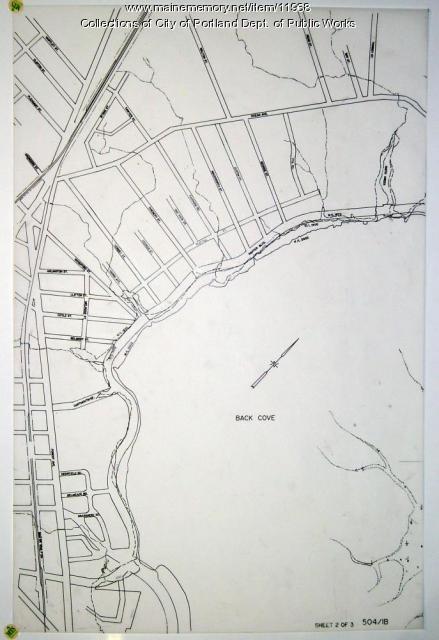Keywords: back
Item 102239
Back Cove bridge subscription form, Portland, 1830
Contributed by: Maine Historical Society Date: 1830-04-15 Location: Portland Media: Ink on paper
Item 11968
Filling in Back Cove, Portland, part 2, 1837-2003
Contributed by: City of Portland Dept. of Public Works Date: 1837–2003 Location: Portland Media: Ink on paper
Item 89928
Hallett property, N. Side Edwards Street, E. Back Lot 213, Peaks Island, Portland, 1924
Owner in 1924: George F. Hallett Use: Summer Dwelling
Item 52692
240 Franklin Street, Portland, 1924
Owner in 1924: Back Bay Motor Boat Club Use: Club House
Item 110197
Proposed Back Cove Recreation Park, Portland, 1935
Contributed by: Maine Historical Society Date: 1935 Location: Portland Client: Portland Public Development Commission Architect: John Calvin Stevens John Howard Stevens Architects
Item 109946
Preliminary Plan for the Improvement of Back Cove, Portland, 1896
Contributed by: Maine Historical Society Date: 1896 Location: Portland Client: Town of Portland Architect: Olmsted Brothers
Exhibit
Public education has been a part of Maine since Euro-American settlement began to stabilize in the early eighteenth century. But not until the end of the nineteenth century was public education really compulsory in Maine.
Exhibit
Throughout New England, barns attached to houses are fairly common. Why were the buildings connected? What did farmers or families gain by doing this? The phenomenon was captured in the words of a children's song, "Big house, little house, back house, barn," (Thomas C. Hubka <em>Big House, Little House, Back House, Barn, the Connected Farm Buildings of New England,</em> University Press of New England, 1984.)
Site Page
"Farmington, Maine. 1893. Back cover. Contributed by Farmington Public Library Description The back cover of the banquet lists the "toasts"…"
Site Page
Historic Clothing Collection - 1870-1890 - Page 2 of 4
"… bodice) and flat fronted skirt flaring out at the back. An early 1870s short gray-green basque dress also features a flat front skirt, with an…"
Story
Spiros Droggitis: From Biddeford to Washington DC and back
by Biddeford Cultural & Heritage Center
A Greek family's impact: from the iconic Wonderbar Restaurant to Washington DC
Story
Eighteen and Out!
by Peter and Rebecca Merrill
How we found our way back to Maine.
Lesson Plan
Maine's Acadian Community: "Evangeline," Le Grand Dérangement, and Cultural Survival
Grade Level: 9-12
Content Area: English Language Arts, Social Studies
This lesson plan will introduce students to the history of the forced expulsion of thousands of people from Acadia, the Romantic look back at the tragedy in Henry Wadsworth Longfellow's famous epic poem Evangeline and the heroine's adoption as an Acadian cultural figure, and Maine's Acadian community today, along with their relations with Acadian New Brunswick and Nova Scotia residents and others in the Acadian Diaspora. Students will read and discuss primary documents, compare and contrast Le Grand Dérangement to other forced expulsions in Maine history and discuss the significance of cultural survival amidst hardships brought on by treaties, wars, and legislation.




















